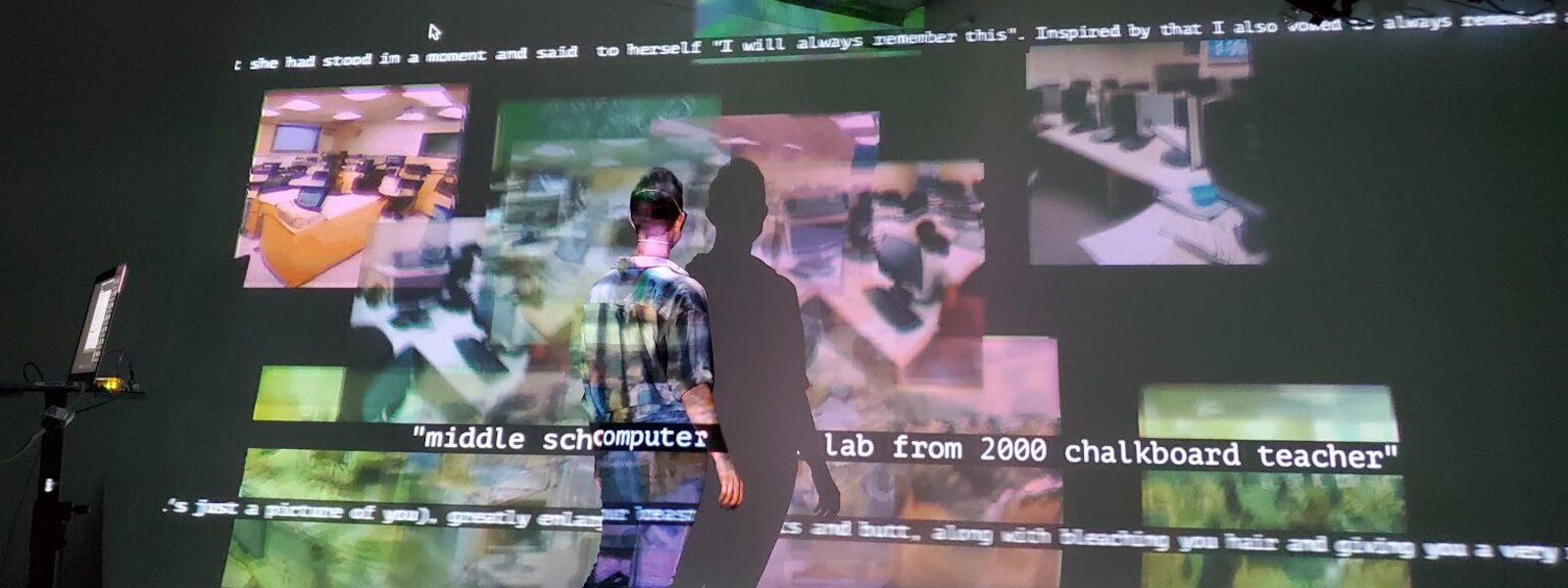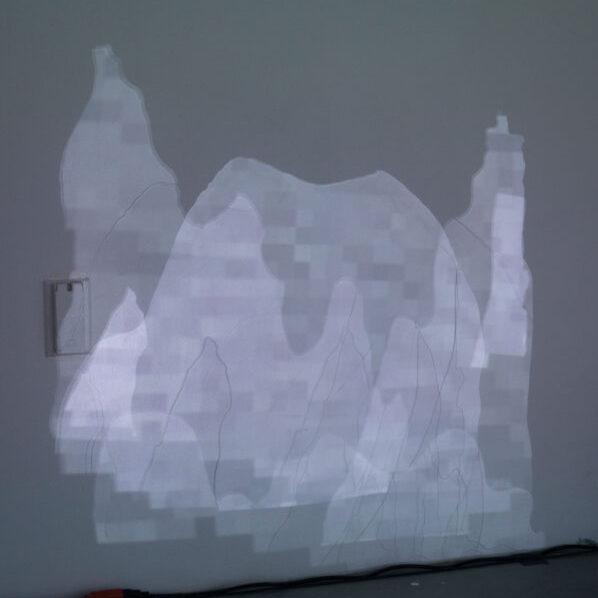About the Artist
Tara Youngborg is a Maryland-based artist, educator, curator, and arts administrator. She has a B.A. in Art and Art History from St Mary's College of Maryland an MFA in Studio Art from Towson University. Her work uses digital media to create immersive video and audio installations that explore place, memory, and technology. She is also the manager of the Stamp Gallery at the University of Maryland, College Park, where she directs the exhibition programming and advises the Contemporary Art Purchase Program. Youngborg is a 2025-2026 Jack Straw New Media Gallery resident, was published in Please Hold Magazine and Touch.My.Prints., received a commission from Alastria Press, and was an Artist-in-Residence at the St Mary’s College Artist House in 2018. She has presented her work in solo exhibitions at the George Washington Carver Center for the Arts and the University of Mary Washington Media Wall, in group exhibitions in the United States and abroad, and always on the web at tarayoungborg.com.Featured Work
Videos
-
Analytical Engine RAM
See more information about Analytical Engine RAMI am interested in how our brains distort memories through neuroscientific processes, and the ways in which our technologies can mirror these human glitches and failures. I use a variety of visual distortions to relate to the distortion of our memories, becoming recontextualized as part of our repeated recollections.
This installation consists of projected, morphing abstract imagery, digital prints of these abstracted images on chiffon, mylar sculptures, an abstract soundscape made from the color data of the video, as well as the audio interpretations of the images by humans and artificial intelligence algorithms1.
For this project, I have trained a neural network, a type of artificial intelligence (AI) algorithm, on a set of images from my past to try and create new memories, shared between myself and my AI. I then used the images that were created from my dataset as training data for the neural network, in order to create a feedback loop to enhance the qualities inherent to the visual qualities created by the model.
I am also considering the tendency towards building our technology to mimic human experience– such as the ways we look to nature for pattern making (ie, using fibonacci numbers to create patterns in code, calling randomized numbers ”seeds” for our programs). The neural network that trained to generate these images uses a randomized noise field (which looks like static on a television screen) as the underlying structure for the image, and then draws out the images it generates through a machinic apophenia2, creating unnatural, blobby animations that look not natural, but have a wide possibility of interpretations.
Our embodied experience extends into the fourth dimension– a space expanded through our experience of time and virtuality through the internet.3 This is also what I am trying to create and consider: the spaces we experience when looking at a digital screen, and the spaces that we cannot see within the computer programs, and how we consider and interpret the past when situated in a different temporal and physical space.
1: An algorithm is a program that consists of a set of rules to solve a specific mathematical or other type of problem. Algorithms are still the base of all of our computer models, and the goal of how we approach computation- as problems to come to a concrete solution.
2: Apophenia: the tendency to perceive a connection or meaningful pattern between unrelated or random things (such as objects or ideas) (Merriam-Webster)
3: Laurence Scott, The Four-Dimensional Human
Medium: Digital prints on chiffon, 2-channel digital projection, 4-channel sound, mylar and rotating stands, foil tape.Year: 2023Details: Variable dimensions -
Confluence
See more information about ConfluenceMedium: Projection, Wood, PlexiglassYear: 2022 -
thanks for the 128kbps memories
See more information about thanks for the 128kbps memoriesai image generator prompt generator, companion website to installation: http://tarayoungborg.com/ai_image_generator_prompt_generator/Medium: Two channel projection, four-channel sound, arduino infrared sensorYear: 2022 -
datastream (Minebank Run)
See more information about datastream (Minebank Run)In this ongoing project, I am interested in creating a portrait of a site (Minebank Run in Parkville, Maryland), and the ways in which we can know a space through data, and the many ways through which data-driven ways of knowing will fail us. There is a contemporary inclination to assume we can truly know things (ourselves, the natural environment, economic trends, image-making techniques) through machine learning or traditional mathematical algorithms. However, these data-driven models don’t accurately model out projections or create understanding, but instead create a compressed average of the data provided.Medium: Multi channel video, digital sound, mylar, cyanotype, etched plexiglassYear: 2024Details: 12’ x 13’ installation -
not a town but a landing page
See more information about not a town but a landing page
The New Castle and Frenchtown Railroad (NCFRR) was one of the first railroads in the United States. The railroad only operated for 28 years; as newer, more direct railways were built, the New Castle and Frenchtown Railroad was abandoned, and then without a commercial artery, the town of Frenchtown was also deserted. This obsolescence of the railroad and town is analogous to digital technological loss in its root in the movement of capital and technological change. In this project, I use the archive in conjunction with contemporary data to try and recreate a ghost without its community. In the process of this re-creation, I use techniques of glitch, loss, and layering to question the role of data, archives, and recreation in understanding place, loss and memory.Medium: Projected video, mesh fabric, ethernet cords, yarn, wire, plexiglass, outlet plates, two-channel sound.Year: 2025Details: 132” x 119” x 203”.

